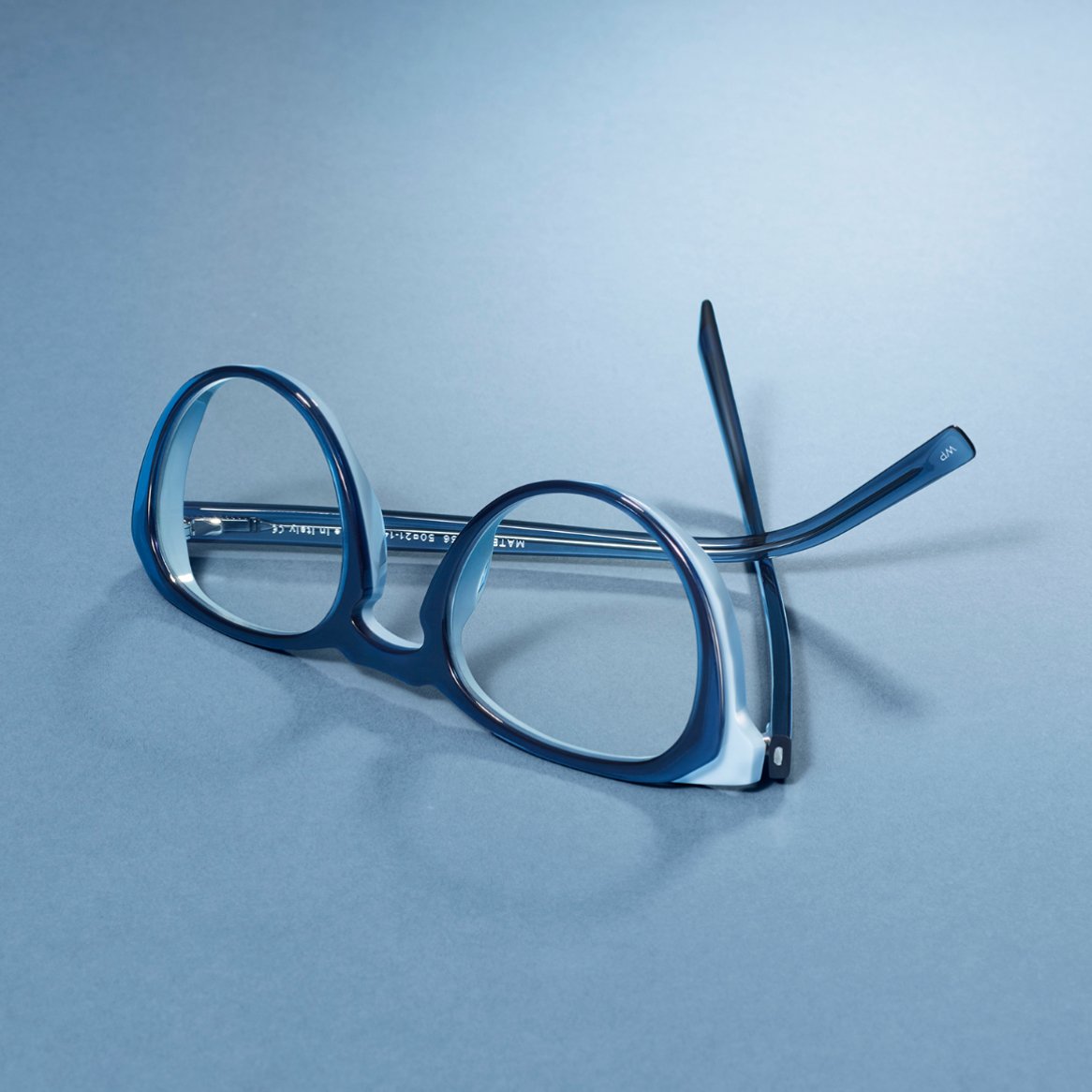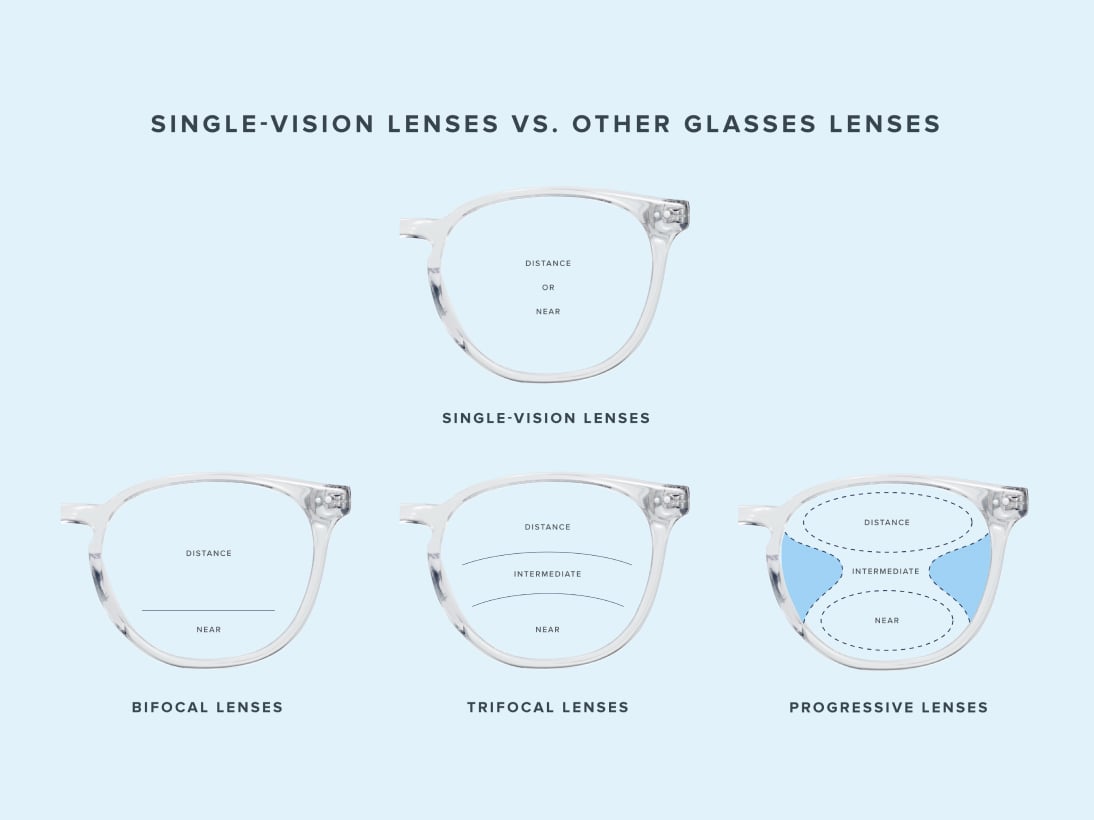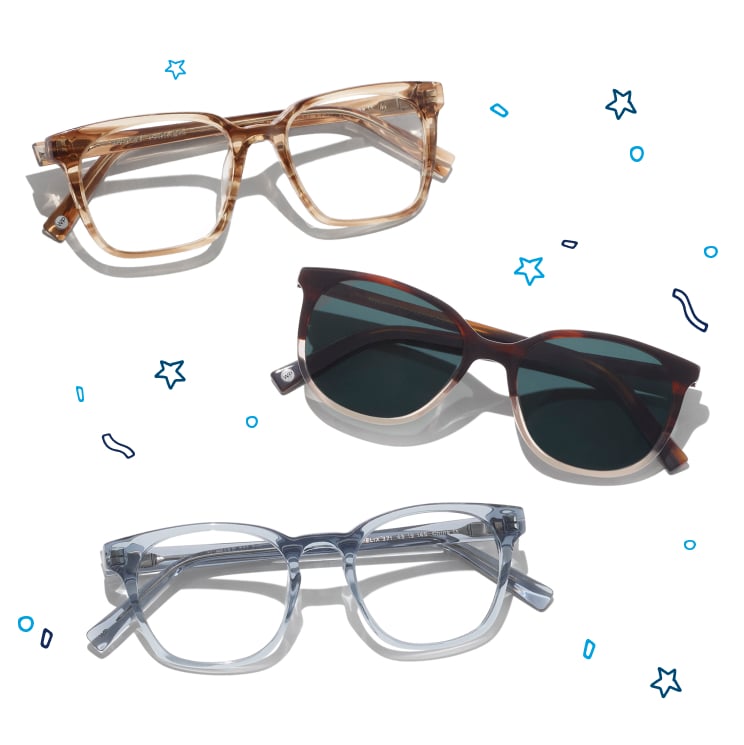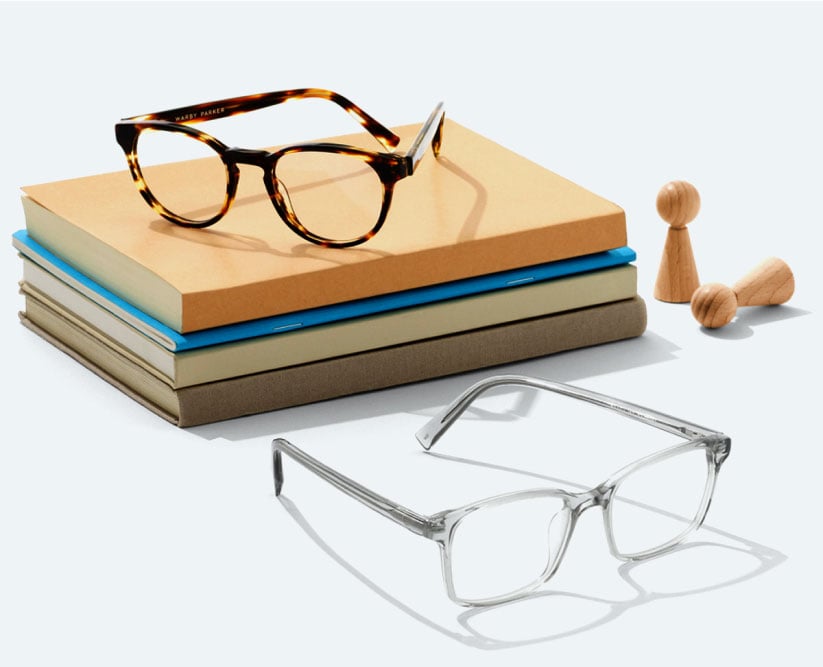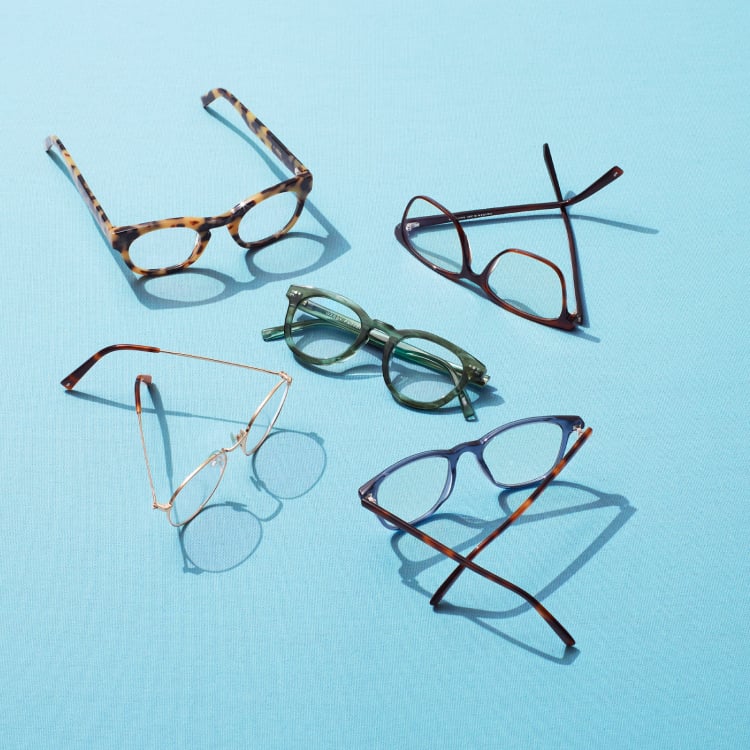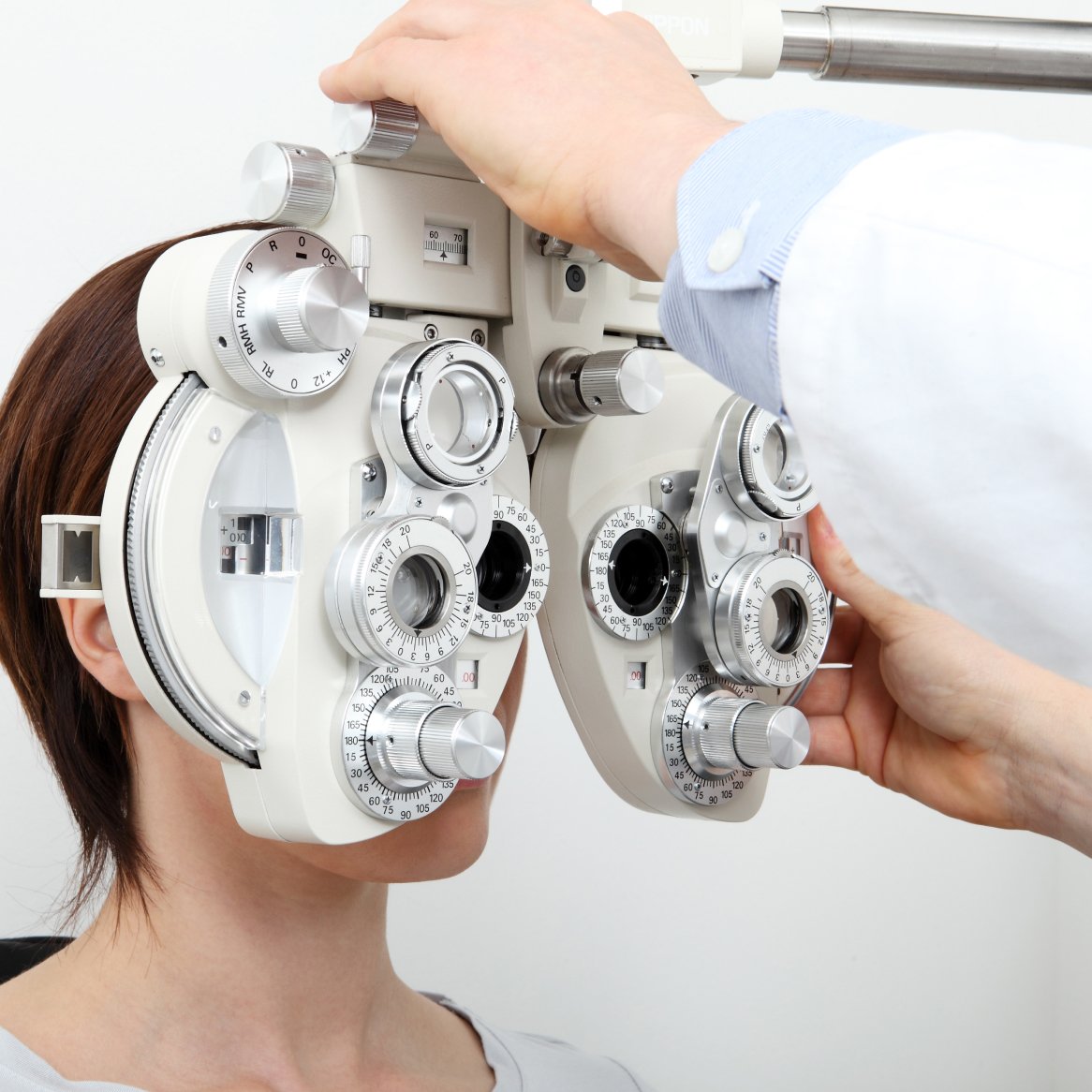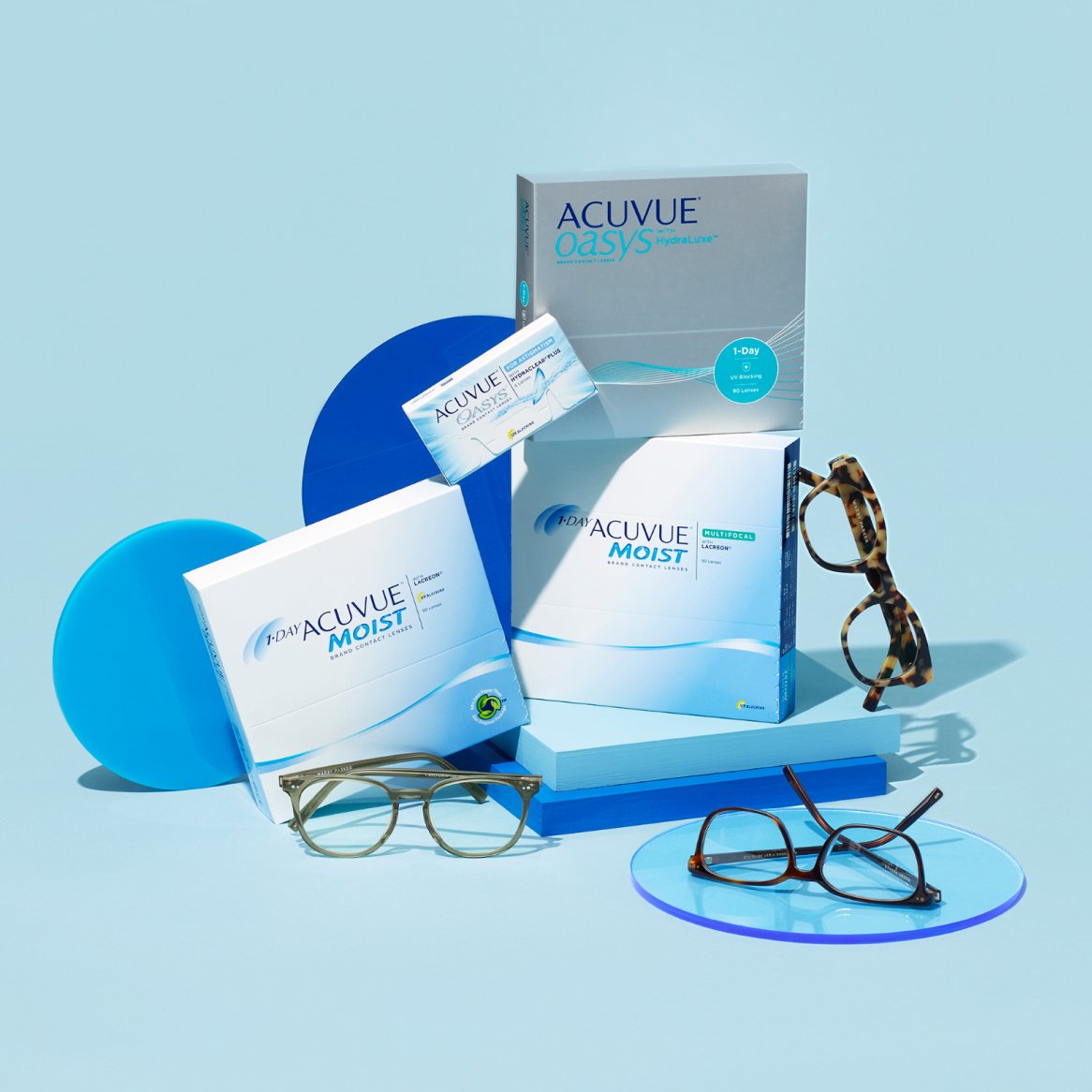Single-vision lenses in eyeglasses correct your vision for just one distance—either close up or far away. In other words, the entire lens is correcting one vision problem. In contrast, multifocal lenses, such as progressives or bifocals, correct vision for two or more distances at the same time.
In this guide, we’ll talk all about single-vision prescription lenses, including who should wear them, how they differ from other lens types, and how much they cost.
Who Should Wear Single-Vision Lenses?
Single-vision lenses correct for one type of vision. It’s the most common type of glasses lens prescribed.
Prescription glasses wearers over age 40 commonly experience age-related changes in their vision that require multifocal lenses. But people under 40 can also need multifocal lenses for multiple types of vision. Both sets of people can opt for either having the multifocal lenses or having two or more pairs of single-vision glasses to correct more than one type of vision.
Vision Issues That Single-Vision Glasses Can Correct
Some of the most common vision issues (called refraction errors) can typically be corrected with single-vision eyewear.
Nearsightedness (Myopia)
If you have myopia, you can see close objects clearly, but you may have issues seeing objects that are far away. For instance, if you can read a book but the poster across the room is blurry, you might have myopia.
Farsightedness (Hyperopia)
Hyperopia is an eye condition that usually affects your ability to see objects close up. So if you can read the poster just fine, but the words in your book are blurry, you might have hyperopia. Hyperopia can also affect distance vision, if the case is severe.
Presbyopia
Presbyopia is another eye condition that makes it difficult to focus on close objects. But unlike hyperopia, presbyopia occurs naturally as we age, often becoming apparent after age 40. If you’re over 40 and find yourself holding reading materials with an outstretched arm to focus on the text, you may have presbyopia.
Presbyopia can be corrected with reading glasses. You can get readers without a prescription, but it’s still a good idea to have an exam with your eye doctor to hear what strength they recommend.
Astigmatism
Astigmatism happens when your cornea is irregularly shaped. It can cause blurry vision at any distance and often occurs along with myopia or hyperopia. In general, a single-vision lens can correct astigmatism along with myopia or hyperopia.
How Single-Vision Lenses Are Different From Other Lenses
Several types of lenses are available for glasses. While single-vision lenses correct vision for one viewing distance, other lens types can include multiple lens strengths in one.
Single-Vision vs. Progressive Lenses
A progressive lens looks like a single-vision lens. But behind the scenes of a progressive lens, several lens powers are joining forces to address all your vision needs at once.
How? Progressive lenses combine different lens strengths into one. This allows you to see clearly at a distance, close up and at intermediate distances without needing to remove or switch glasses. And unlike bifocals or trifocals, progressive lenses don’t have a line separating visual zones on the lens. Instead, the lens gradually transitions into each zone.
Single-Vision vs. Bifocal and Trifocal Lenses
Like progressives, bifocal and trifocal glasses are types of multifocal glasses that correct vision at more than one distance. Bifocal glasses correct your vision in two ways (near and far), while trifocals correct vision three ways (near, intermediate, and far). Bifocal and trifocal lenses tend to have a visible line between the visual zones.
How Much Do Single-Vision Lenses Cost?
Single-vision lenses tend to cost less than other types of lenses (like progressives, for instance). But the exact price you’ll pay for glasses fitted with single-vision lenses will vary with the prescription, lens material, features, such as lens coatings, and other lens options. Plus, your choice of frames will probably have an effect on the total price of your glasses, too.
Keep in mind—purchasing multiple pairs of single-vision glasses for different purposes (reading and driving, for instance) could ultimately cost more than one pair of multifocal glasses. Of course, getting several pairs of glasses gives you an opportunity to shop for more styles. (And we all know that’s the fun part. 😉)
Are Single-Vision Glasses Right for You?
Getting an eye exam is the best way to know what type of lens is best for you. Your eye doctor can advise you on the most appropriate lenses for your glasses. Then, no matter what you’re doing, you’ll be able to see clearly.

